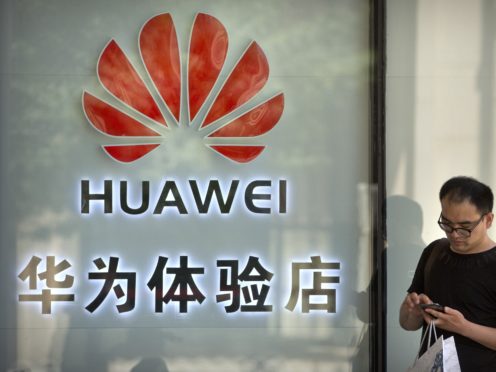
Chinese tech giant Huawei has filed a motion in a US court challenging the constitutionality of a law that limits its sales of telecoms equipment, the latest action in an ongoing clash with Washington.
Huawei’s chief legal officer Song Liuping said the firm had filed a motion for summary judgment asking the court to rule on whether it is constitutional for the US to implement a military spending provision that bars the government and its contractors from using its equipment.
Huawei is the biggest global maker of network equipment, but it is now fighting to maintain access to major markets for next-generation communications as the US claims the company threatens international cybersecurity.
In March, Huawei launched its suit against the US law in Plano, Texas, the headquarters of its US operations.
The summary judgment motion seeks to accelerate the legal process to give US customers access to Huawei equipment sooner, according to a statement from Huawei.
Mr Song said the “state-sanctioned campaign” against the company will not improve cybersecurity.
“Politicians in the US are using the strength of an entire nation to come after a private company,” he said. “This is not normal.”
The US and China are embroiled in a protracted trade dispute and tariff war that began last July following complaints from Donald Trump that China steals from or pressures foreign companies to hand over technology while unfairly subsidising Chinese businesses.
The most recent round of negotiations earlier this month ended with no agreement, after Mr Trump more than doubled duties on 200 billion dollars (£158bn) in Chinese imports.
China responded by raising tariffs of 5% to 25% on 60 billion dollars (£47.4bn) worth of American goods.
“The U.S. government has provided no evidence to show that Huawei is a security threat”: Huawei Chief Legal Officer Song Liuping announces the filing of a motion for summary judgment to end the unfair treatment of the tech giant. #HuaweiFacts
— Huawei Facts (@HuaweiFacts) May 29, 2019
Soon after, the US Commerce Department placed Huawei on its “Entity List,” effectively barring US firms from selling its technology without government approval.
Huawei relies heavily on US components, including computer chips, and about one-third of its suppliers are American.
The move has already affected the company’s US partnerships.
Google said it would continue to support existing Huawei smartphones, but future devices won’t carry its flagship apps and services, including maps, Gmail and search — a change that will likely make Huawei phones less appealing.
Song said the US is setting a “dangerous precedent”.
“Today it’s telecoms and Huawei,” he said. “Tomorrow it could be your industry, your company, your consumers.”

Enjoy the convenience of having The Sunday Post delivered as a digital ePaper straight to your smartphone, tablet or computer.
Subscribe for only £5.49 a month and enjoy all the benefits of the printed paper as a digital replica.
Subscribe